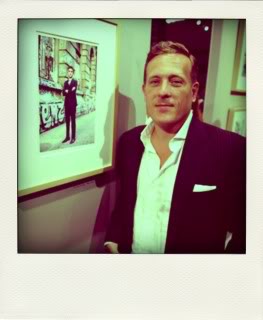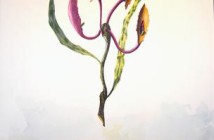By JUDY KERMIS BLOTNICK
Scott Schuman has logged some 15 years in the fashion industry during which time he learned the same truth that Yves St. Laurent stumbled on in the early 70's. The best ideas, the most creative approaches to dressing can be found on the street. The way someone puts themselves together makes the difference between great personal style and just clothing. Frequently having to make do with less generates the freshest looks. Schuman's blog, The Sartorialist, where he features photographs of ordinary yet spiffy looking people celebrates their spontaneity as well as their keen eye that made for that particular gathering of color, texture, shape, proportion and detail. Art at work, fresh and original. While many of his subjects are gorgeous young men and women Schuman has also photographed older practitioners of dressing well, sometimes presenting a more interesting image precisely because they have honed their craft longer. He especially seeks out people who have aged gracefully, without surgical intervention.
While young, most artists' values are in the here and now. Rarely does the idea of permanence interfere with the art making and the word "archival" is irrelevant to many. This kind of work often has that freshness, an immediacy to it, a response to sudden inspiration. Living in the moment younger artists take more risks, are not bothered by rules and don't yet know that they can't hit the ball out of the park; so they do. Unfortunately this produces many one-hit wonders, artists grabbed fresh out of grad school and featured in the glossy pages of art journals, careers quickly aflame and extinguished with equal speed. But this is not news, just a gripe.
Contrast this with the late bloomers who plod along perfecting their craft, fueled in their quest by the discoveries they make as they search for some kind of certainty while experimenting. These two very distinct age groups are expertly examined in economist David W. Galenson's book, Old Masters and Young Geniuses. (The book was suggested by an ageless artist friend.) Galenson divides artists into "conceptual," or the prodigies, and the "experimental," those who develop more slowly. He cites Picasso as conceptual, peaking early, and Cezanne as experimental and examines the pros and cons of each experience.
Whether one agrees with these examples or not the problem with books like these, published in 2007, is that it is hard to frame creativity in 2009 by the same guidelines. My own interest in art history is not deep enough to engage in conversation on these issues. Not that history is not important but I am more concerned with what happened to artists in the last decade so that we can look around the corner and decipher what it might mean for the next one.
The Internet changed everything. Younger artists harnessed its power, established websites, used it as an artform, communicated globally, were not afraid to make art that would disappear soon after it was viewed and photographed. The speed with which art trends were established and disseminated made them old before anyone had a chance to assess their meaning, add an "ism" to it, and the "art world" (like the fashion establishment) burnt out. The big galleries, the super-hip art dealers no longer called the shots because true creativity had moved to the streets and required a different kind of marketing. Power shifted.
If this is true then what does this mean for artists in 2010 and onward? What will it take for the young geniuses working today to have staying power? If young fashion addicts no longer look to fashion editors or stores to set trends then how outdated is it to have a show in a gallery or be featured in yet another tired biennial as proof of having arrived? That kind of "designer bag" branding is no longer appropriate in this economic climate. With that said, can a middle-aged artist (allow 40-60 to be called middle-aged) working today, who has not yet met with commercial success, hope to be hyped in the press, shown in a museum or gallery, be discovered? Or what about the mid-level artist who has had some modicum of exposure, thought there was a career (career???) to be had? What now? ( I am not talking about the staying power of the likes of Bruce Nauman, Vic Muniz, Jim Hodges, On Kawara or Kiki Smith et al. because while they are my personal gods, they staked their turf during different times.)
Maybe the question itself is outdated. Maybe the art world will mimic the reality TV shows where the everyman and the everywoman is deemed to be of interest and everyone living in one of the outer boroughs of New York deserves to open a gallery on land or on water? Democracy at work. Since print media is shrinking the publicity for artists in these galleries will have to be disseminated on the Internet and everyone can be famous for at least 5 minutes. Certainly not 15.
All found at The Katie Girls blog.




